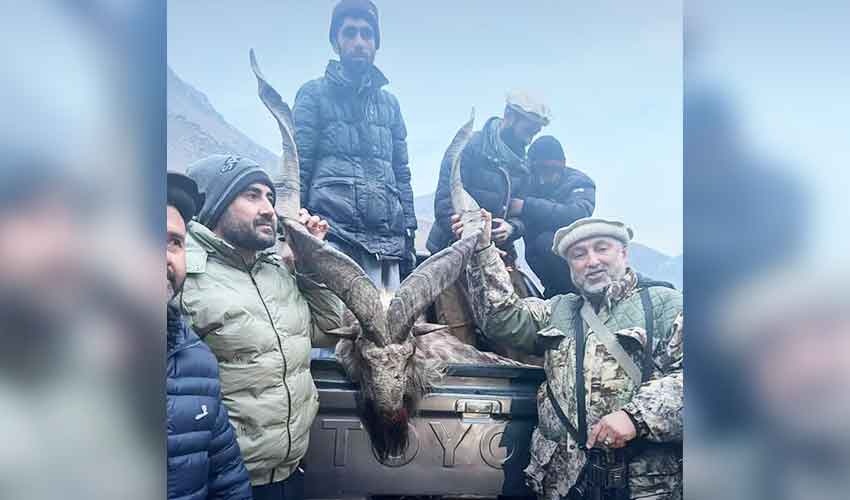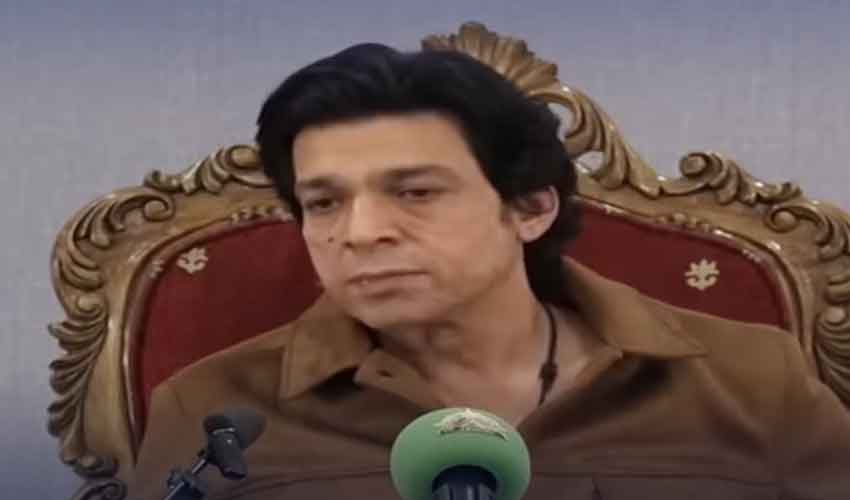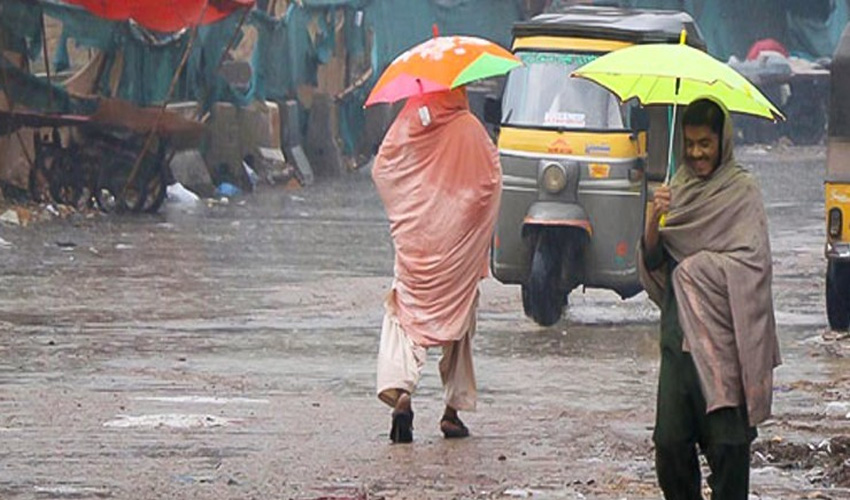The first Markhor trophy of the year has been hunted down in Chitral.
An American hunter shot down a Kashmir Markhor in Toshi-Shasha Community Park for a fee of a whopping $185,000.
Deron James Millan, an American national, inaugurated this year’s trophy hunting season by hunting down a 9.5-year-old Markhor in Lower Chitral on Saturday.
The size of the horns of the ‘mountain monarch’ was 45 inches, while reportedly the highest record in the history of trophy hunting in Chitral is 53 inches. The hunting took place in the Toshi-Shasha Community Park in Chitral.
The American hunter paid a fee of $185,000 for the trophy hunting permit from the wildlife department, which is approximately equal to over Rs52 million.
Farooq Nabi, the divisional forest officer of Chitral's wildlife division, has said that the hunter did not have to ascend the pasture in high altitude as he located the animal in a wheat crop field near the adjoining Shali village. He said that due to community-based conservation, the population of Kashmir Markhor had increased.
“Keeping in view the strength of markhors in a certain conservancy, the wildlife department auctions two markhors every year in Chitral district," he remarked.
Reportedly, 80% of the revenue obtained from Markhor trophy hunting permit fee is spent on the welfare of the local population, while 20% is transferred to the wildlife department's account.
The high price tag for the hunt reflects the rarity and value of Markhors. These endangered wild goats are found in the mountainous regions of northern Pakistan, Afghanistan, and Tajikistan. Trophy hunting is a controversial practice, with some arguing that it helps conservation efforts by generating revenue for local communities, while others argue that it is unethical and unsustainable.
The Pakistani government has issued a limited number of permits for Markhor trophy hunting in recent years. The fees generated from these permits are used to fund conservation programs for the Markhor and other endangered species.
The hunt has sparked debate in Pakistan, with some people supporting it as a way to generate revenue for local communities and others opposing it on ethical grounds.
Arguments in favour of trophy hunting
- Trophy hunting can generate significant revenue for local communities, which can be used to fund conservation efforts and improve livelihoods.
- Trophy hunting can help to control the populations of certain wildlife species, which can prevent damage to crops and livestock.
- Trophy hunting can promote awareness of conservation issues and encourage people to support conservation efforts.
Arguments against trophy hunting
- Trophy hunting is cruel and unethical, as it involves the killing of animals for sport.
- Trophy hunting can be unsustainable, as it can lead to the decline of wildlife populations.
- Trophy hunting can harm the economies of local communities, as it can damage the reputation of tourism destinations.
The debate over trophy hunting is likely to continue, as there are strong arguments on both sides of the issue. It is important to weigh the potential benefits and drawbacks of trophy hunting carefully before making a decision about whether or not to support it.
In addition to the ethical considerations, there are also concerns about the economic impact of trophy hunting. Some argue that trophy hunting can damage the economies of local communities, as it can deter tourists from visiting. Others argue that trophy hunting can actually benefit local communities by generating revenue and creating jobs.
The economic impact of trophy hunting is a complex issue, and there is no easy answer. It is important to consider all of the factors involved before making a judgment about the economic impact of trophy hunting.
Overall, the hunt of the first Markhor trophy of the year in Pakistan is a complex issue with no easy answers. There are strong arguments on both sides of the debate, and it is important to weigh all of the factors involved before making a decision about whether or not to support trophy hunting.


























